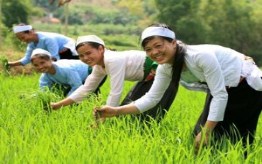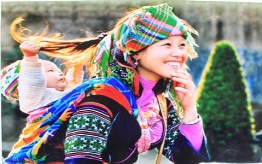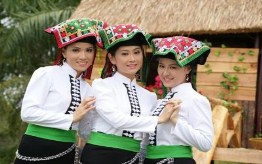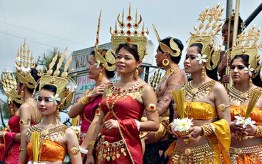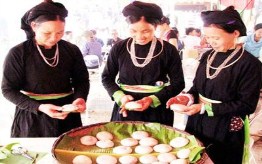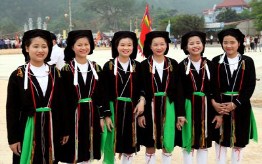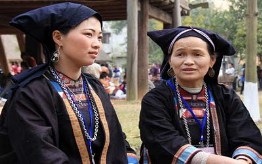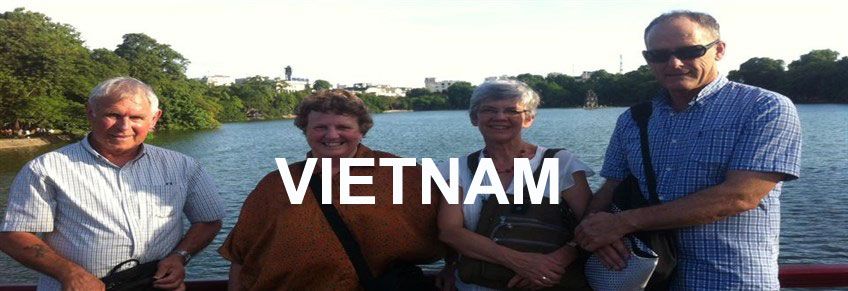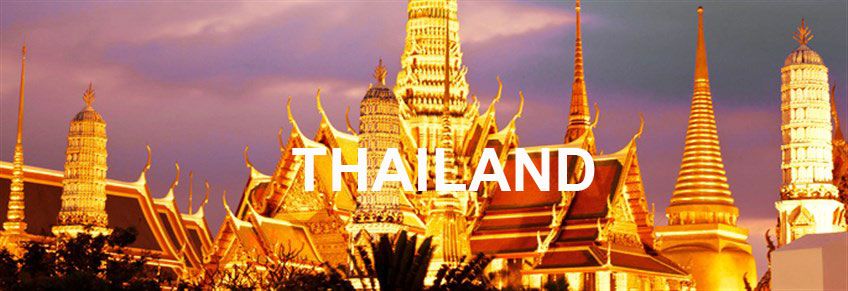Other name: Brao
Population: 231 people
Language: Brau language belongs to the Mon-Khmer language group (of the Austroasiatic language family).
History: The first Brau came to Vietnam about a century ago. They live mainly in southern Laos and northeastern Cambodia. At present, most Brau communities are still living in the basins of Xe Xan (Xa ma cang) and Nam Khoong (Mekong) rivers. The Brau are pround of their traditions, which they recall in such legends as Un cha dac lep (rising blaze, rising water), about how great floods were weathered by the Brau people.
Production activities: The Brau live mainly on swidden fields, cultivating sticky rice o\and ordinary paddy, corn and manioc. Slash-and-burn agriculture is widely practiced, with people using digging sticks to make holes into the ground for sowing deeds. Harvesting is done manually. Hunting and gathering still play an important role today, which ensures a sufficient daily food supply for the family. In addition, every Brau village has a blacksmithing workshop where agricultural tools are made. Brau men are skilled in weaving and plaiting. Local people often barter agricultural and forestry products for clothes and textiles supplies by other minority groups.
Diet: The Brau cook ordinary rice in earthen pot, but use a fresh length of neohouzeaua (a type of bamboo) to prepare the sticky rice dish called com lam. They grow corn and manioc as feeds for livestock and poultry. Popular foods include salt with chili, vegetable, fresh bamboo shoots, fish, and the meat of certain animals. Can (pipe) wine is enjoyed by both men and women. Moreover, people of all ages like smoking local tobacco with a khan pipe.
Clothing: In the past, men wore loin cloths and women wore one-piece-long dresses. In summer, people often left their upper torso naked or wore a short pullover. In winter, they often covered their bodies with a heavy blanket. A mark of beauty for Brau women is the stretches earlobe, meant to carry yellow bamboo ornaments or ivory earrings. Women’s jewelry includes wrist-chains and necklaces, often made of bronze, silver or aluminum. According to Brau customs, boys and girls who reach the age of puberty (between 15 and 16 years old) must have the four front teeth of their upper jaw evenly filed, a deed which fully integrated them into village life as adults.
Lifestyle: The Brau live in the Dac Me village of Bo Y commune, Ngoc Hoi district, Kon Tum province. They live in houses in stilt with steep roofs. The floor of the house is arranged at different elevations which clearly define the various activities of the family members. A plank connects the main house with the adjacent rooms. Brau homes are oriented with their main doors, built with their main doors, built below the gable, opening towards the centre of the village where the communal house stands. This arrangement results in circle of houses radiating out from the spokes of a cart-wheel.
Transportation: The bamboo-woven back-carrier is the most popular means of transporting goods and produce.
Social organization: The Brau’s society is now an early stage of differentiation between the rich and the poor. More patriarchal nuclear families are appearing, with increased equality between men and women. Traces of matriarchy still exist and remain influential in some places.
Marriage: The Brau wedding is organized at the bride’s home, but the cost are borne by the bridegroom’s family. After the wedding, the husband stays at his wife’s family for about four to five years, followed by a change of residence to the husband’s family.
Funerals: When a family member passes away, the funeral host beats the drums and gongs to inform other villagers of the death. The body of the deceased is placed in a coffin made from a hollowed-out tree trunk, and put in a makeshift funeral house erected near the family’s home. The coffin is often half-buried in the ground. A funerary shelter is built over the grave to hold the property inherited by the inherited by the deceased. Some of these items will be destroyed through breaking, piercing or chipping.
Building a new house: When a new house is finished, the veneration of the village’s gods takes place followed by a big house-warming party that is attended by the whole village.
Festivals: A ceremony for celebrating “new rice” after each harvest time is the principal festival of the year. It does not have a precise date because it depends upon the planting schedule, and the timing may vary from family to family.
Calendar: As in the past, an agricultural calendar, based on phases of the moon each month is used for fixing the schedule for planting and harvesting.
Education: The communal house in the heart of the village serves as a traditional school for the village children and youth. It is often run by the village elders. The students are vocationally oriented and taught about the cultural as well as fighting skills to ensure public security and to protect their own village and customs.

